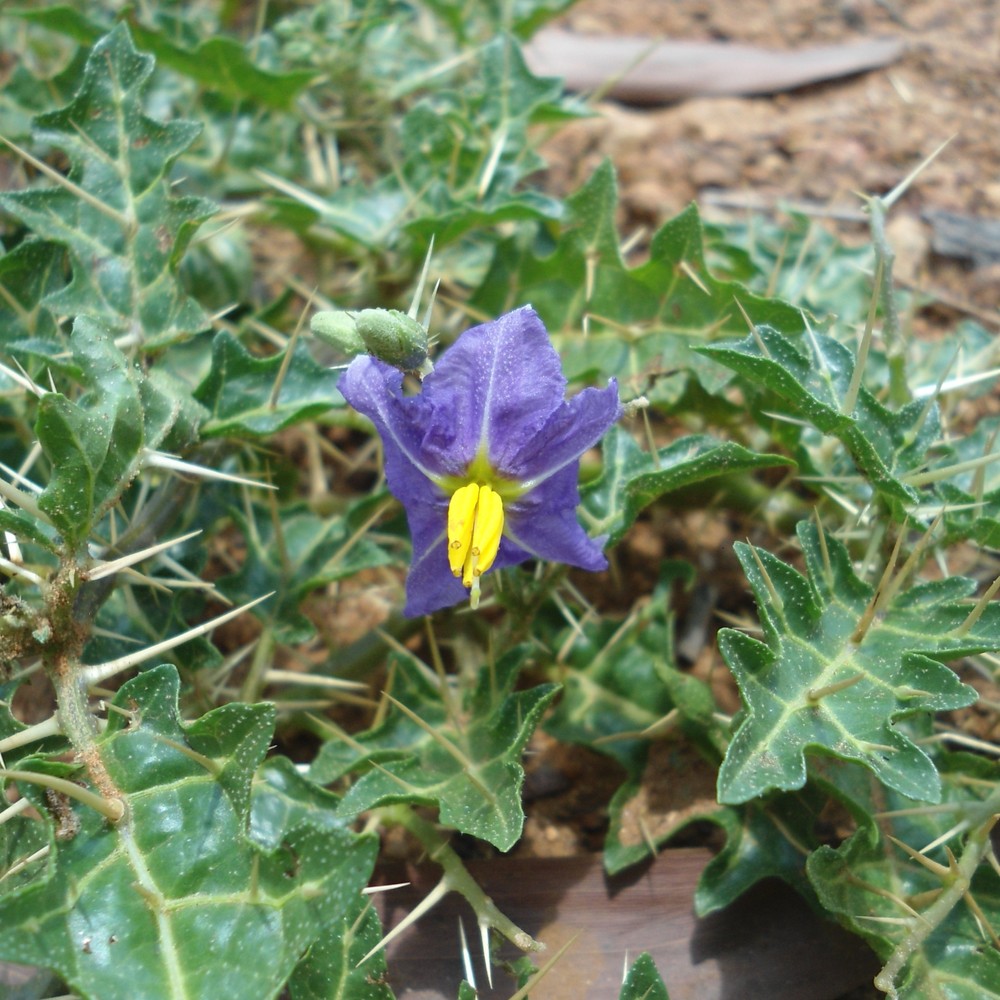Surattense nightshade
(Solanum heterodoxum)

Description
Solanum virginianum, also called Surattense nightshade, yellow-fruit nightshade, yellow-berried nightshade, Thai green eggplant, Thai striped eggplant (from the unripe fruit), is also known as Indian night shade or yellow berried night shade plant, the common name is Kantakari, Solanumsurattense Brum. f. and Solanum xanthocarpum Schrad. and Wendl. are synonyms of Solanum virginianum L. (Sharma et al., 2010). It is also a medicinal plant used mostly in India. Some part of the plant is poisonous ex. the fruit which is poisonous. Thorny Nightshade is a herb which is erect, sometimes woody at base, 50–70 cm tall, copiously armed with sturdy, needlelike, broad-based prickles 0.5–2 cm × 0.5–1.5 mm. Leaves are unequal paired; stalk 2–3.5 cm, prickly; leaf blade ovate-oblong, 4–9 × 2–4.5 cm, prickly along veins, margin usually 5–9-lobed or pinnately parted, lobes unequal, sinuate, apex acute. Inflorescence elongate racemes 4–7 cm. Sepal tube is bell-shaped 1 cm in diameter. Flowers blue-purple, 1.4–1.6 × 2.5 cm; petals ovate-deltate, 6–8 mm, densely pubescent with stellate hairs. Filaments 1 mm; anthers 8 mm. Style 1 cm. Fruiting pedicel 2–3.6 cm, with prickles and sparse stellate hairs. Fruiting sepals prickly, sparsely pubescent. Berry pale yellow, 1.3–2.2 cm in diameter. The ripe yellow fruits are around 3 cm in diameter. Flowering normally appears around November to May. This plant is cultivated in Himalayas, South-East Malaysia, Australia, and Polynesia region. The plant is found well versed in India, often in waste places, on roadsides and in open space. The plant has many medical properties. In the tribes of Nilgiris, the plant is used to treat a whitlow (finger abscess): the finger is inserted into a ripe fruit for a few minutes. In Nepal, a decoction of root is taken twice a day for seven days to treat cough, asthma and chest pain. Ayurvedic Physicians commonly used the drugs of Dashmula in their private practice. Dashmula comprises root of five trees (brihat panchmula) and root of five small herbs (laghu panchmula). Deep study in Ayurveda indicate that out of 33 species of Solanum from family Solanaceae, two species are used in “Dashmula” such as Solanum anguivi Lam. (Bruhati) and Solanum virginianum L. (Kantkari) (Sharma, 2006). The tribals and villagers also used the drugs of Dashmula group for their common ailments. It is estimated that about 8000 metric tons of roots of Dashmula are used annually by Ayurvedic industry in Maharashtra.
Taxonomic tree:







